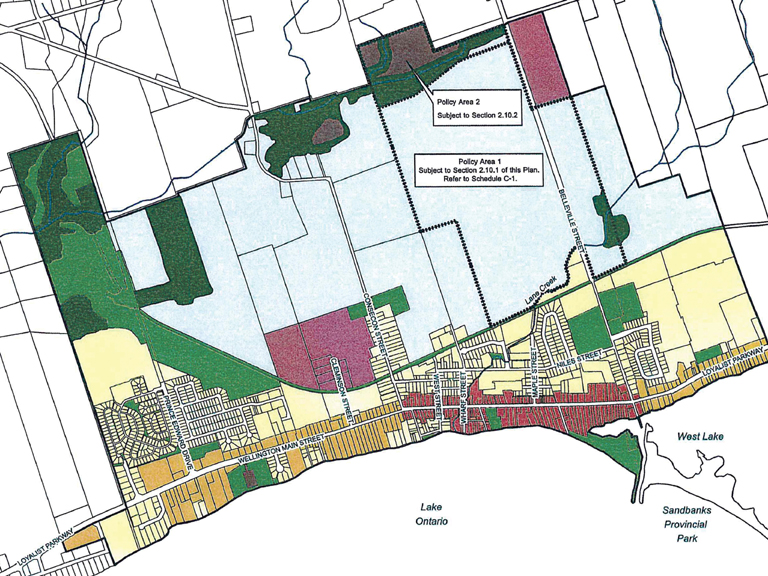County News
Drawing lines

CAO says the problem is Wellington’s Secondary Plan
It all comes back to lines on a map. The basis for spending $100 million in infrastructure in Wellington is thin lines drawn around the fields north of the village.
The audit committee is still waiting for Watson’s population growth person, Jamie Cook, to explain how his firm arrived at population growth assumptions for Wellington and Picton. But it is evident that even Watson’s high growth scenario won’t produce the throng of new arrivals needed to fund Shire Hall’s grand super regional water plans.
The questions raised at the audit committee last week were getting more pointed as the non-answers piled up.
Wilma Vreeswijk, an audit committee member, was struggling to comprehend how it was possible that assumptions for Wellington were driven by an engineering document—and not by Watson, the economics consultant.
CAO Marcia Wallace suddenly appeared in the Zoom meeting.
“The master servicing plan was based on Wellington’s Secondary Plan,” explained Wallace.
Vreeswijk then sought assurance that the foundation document, the Secondary Plan, was drawing on advice from experts like Watson. That was indeed a there, there.
“I wasn’t here,” said CAO Wallace. “And no one from planning was. I can’t attest to what was used to inform the Secondary Plan.”
Wilma Vreeswijk wasn’t satisfied with the answer.
“Is there another data source driving the population planning assumptions?” pressed Vreeswijk.
Wallace responded, “What I’m saying is that a secondary plan puts a geographical base to it. They start from the availability of hectares. That drives some of the assumptions. However that line was put together—the line that defined the edge of Wellington— that decision was a very important catalyst that triggered other assumptions.”
It is on this frail foundation that Wellington was imagined to grow from 2,000 to 8,600 people. It seems no one ever asked whether this assumption made sense—or was feasible. Until now.
Meanwhile, Shire Hall didn’t feel it had a choice. Senior leadership argues that the village’s Secondary Plan opened up these lands to developers and that they had no option but to build out all the waterworks infrastructure based on the developable land. It contends that the municipality must build all this infrastructure or risk the wrath of the developer.
The result is a plan for a vast waterworks infrastructure on a scale that assumes it was all needed immediately. Shire Hall had hoped to mitigate this conundrum with front-end agreements encouraging developers to help pay some of the waterworks costs upfront. But so far, these agreements have produced zero revenue. And there is no mechanism to compel the developer to do so. Ever.
The discussion led audit committee chair John Hirsch to conclude, “There has to be a fresh look at population numbers.”
Indeed.

Comments (0)